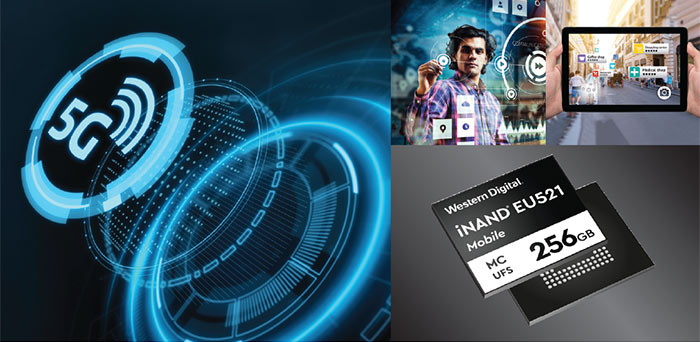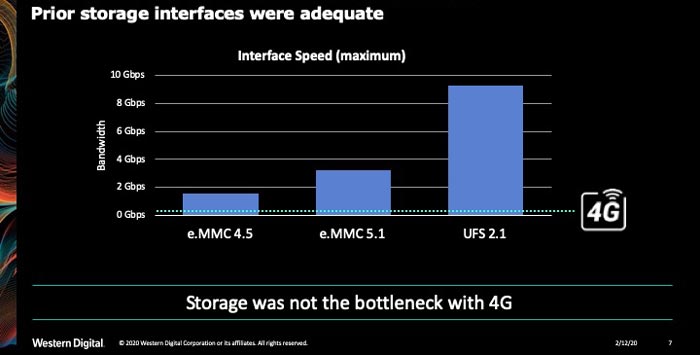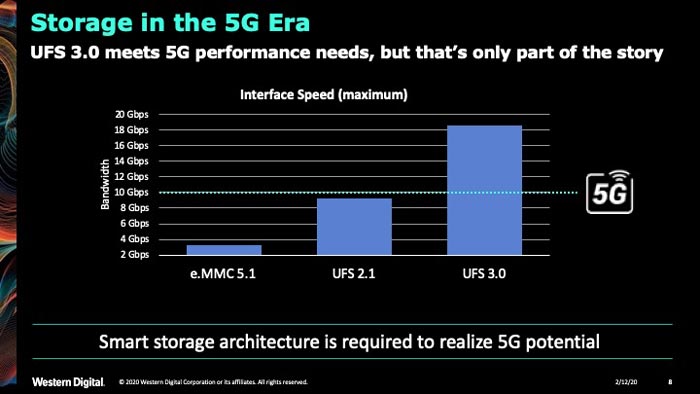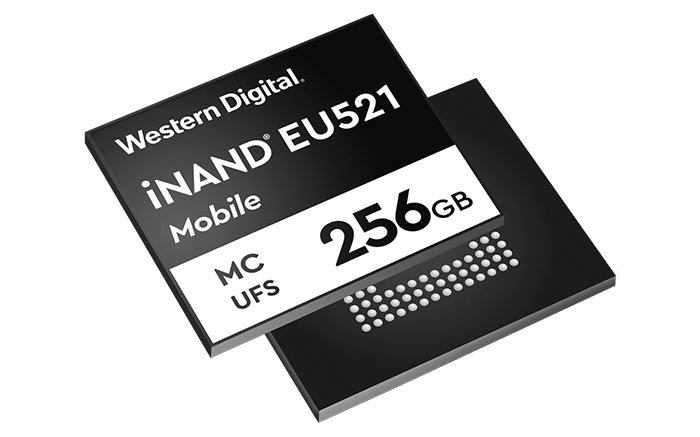There has been a lot of talk of 5G over recent months / years. A lot of news has been about the availability of 5G modems for devices like smartphones, tablets and laptops - as well as news about 5G mobile service providers. However, what is the use of such fast data connectivity if the rest of your device's components can't keep up? The old adage that a computer is only as fast as its slowest component would seem to apply.

WD is determined that its storage components won't be to blame for sickly performance in a shiny new 5G device, and has thus launched its Mobile iNAND UFS Series Embedded Flash Drives.

As you can see above, contemporary storage standards weren't a bottleneck in 4G devices. eMMC 4.5, eMMC 5.1 and UFS 2.1 storage types could easily cope with 4G data transfers. However as we enter the 5G era the bandwidth available, even via UFS 2.1, can be lacking.

Thus WD has announced its iNAND EU521 embedded flash drives which meet the JEDEC standard for UFS 3.1. It explains that UFS 3.1 is specifically tailored for mobile applications and computing systems requiring high performance and low power consumption.

An important feature of UFS 3.1 is 'Write Booster' technology. This tech uses SLC NAND to boost transfer speeds, while MLC NAND accompanies it for cost efficiency. WD implements Write Booster via its own proven 6th gen SmartSLC caching technology. The headline Turbo Sequential Write speed supported by the iNAND EU521 is up to 800MB/s.
WD iNAND EU521 key features
- UFS 3.1 Gear 4, 2-Lane
- Designed for flagship and 5G smartphone and tablets
- iNAND MC EU521 is ready for 5G devices with turbo Sequential Write speeds and increased performance with SmartSLC Gen 6
- Capacities of 128GB to 256GB within a unified small form factor package of 11.5 x 13 x 1.0mm

WD will be making its iNAND EU521 embedded flash drives available in capacities from 128GB, through 256GB to 512GB in the coming weeks.













